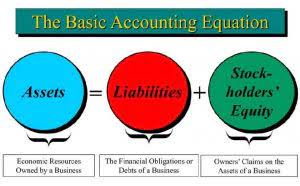
This is especially true for larger businesses with multiple sales channels and storage facilities. inventory accounting helps you figure out the value and costs of your inventory. That’s important for things like setting prices, getting insured, budgeting, working out taxes, and selling your business. It can also help you identify where you’re making the most money in your business. Inventory has a value – even before you do anything with it – and so it’s listed as an asset on your business balance sheet. But it can lose its value fast if it gets old, out of date, damaged, or the market price for that type of product drops.
- Cost of goods sold refers to the total production and purchasing costs that go into a product sold by a business.
- So if a company is manufacturing or selling an outdated item, it may see a decrease in the value of its inventory.
- Equipment and supplies you’ve bought to run your business, such as work tools, vehicles and stationery, typically aren’t treated as inventory.
- Following International Financial Reporting Standards (IFRS), a business can determine the appropriate information as required, like corresponding inventory accounting numbers.
How is IAS 2 different from US GAAP?
Accurately valuing inventory is crucial for financial reporting and decision-making. It involves determining the cost of inventory, including direct costs such as materials and labor, as well as indirect costs like overhead expenses. The value of inventory can fluctuate based on market conditions, obsolescence, and other factors.
- Talking to an inventory accounting specialist or accountant can help you choose the inventory accounting method that’s best for your business and circumstances.
- In contrast, the periodic inventory system tracks inventory by periodically checking the inventory with a physical count to measure the stock and cost of goods sold.
- Inventory accounting helps businesses determine the value of their stock on hand and break down the costs of purchasing, producing, and managing inventory items.
- PwC refers to the US member firm or one of its subsidiaries or affiliates, and may sometimes refer to the PwC network.
- Although the ABC Company example above is fairly straightforward, the subject of inventory and whether to use LIFO, FIFO, or average cost can be complex.
- At the same time, inventory can be thought of as a liability (if not in an accounting sense).
Company B: Optimizing Inventory Turnover with LIFO
- Inventory accounting helps you avoid these problems by tracking stock levels and ensuring inventory is always available when needed.
- The perpetual inventory system automatically keeps your inventory records up to date as stock movements occur, so your cost of goods sold (COGS) and inventory accounting will be more accurate throughout the year.
- LIFO usually doesn’t match the physical movement of inventory, as companies may be more likely to try to move older inventory first.
- Regardless of the inventory cost method mentioned above, finished goods inventory consists of the raw material cost, direct labor, and an allocation of overhead.
- How pipeline inventory is accounted for largely depends on the terms and conditions of the shipping agreement between the shipper and the receiver.
Weighted average cost is an inventory valuation method that determines the average cost of a company’s inventory based on the individual costs and quantities of each item kept in stock. This method divides the cost of goods available for sale by the number of units available for sale. This technique provides businesses with an accurate depiction of the ending inventory and its value. Many companies will opt to use the FIFO inventory method to offload their older stock first.
More on accounting for manufacturing
If the net realizable value of the inventory is less than the actual cost of the inventory, it is often necessary to reduce the inventory amount. Manage complex financials, inventory, payroll and more in one secure platform. From sole traders who need simple solutions to small businesses looking to grow, you can do it all in one place with MYOB. Although we endeavor to provide accurate and timely information, there can be no guarantee that such information is accurate as of the date it is received or that it will continue to be accurate in the future.
Equipment and supplies you’ve bought to run your business, such as work tools, vehicles and stationery, typically aren’t treated as inventory. We’re firm believers in the Golden Rule, which is why editorial opinions are ours alone and have not been previously reviewed, approved, or endorsed by included advertisers. When your supply begins to run low in late January, you turn to another supplier, who offers you a price of $5 per crystal, so on January 30, you purchase an additional 100 crystals at the new cost. For example, on January 2, 2020, you purchase 100 crystals from your regular supplier at a cost of $4 each. On January 15, you need to purchase an additional 100 crystals, but your regular supplier raised the price to $6 each.
When it comes to inventory accounting, you’ll learn everything you need to know in this guide to inventory accounting. When a company selects its inventory method, there are downstream repercussions that impact its net income, balance sheet, and ways it needs to track inventory. All pros and cons listed below assume the company is operating in an inflationary period of rising prices. Since LIFO uses the most recently acquired inventory to value COGS, the leftover inventory might be extremely old or obsolete. As a result, LIFO doesn’t provide an accurate or up-to-date value of inventory because the valuation is much lower than inventory items at today’s prices. Also, LIFO is not realistic for many companies because they would not leave their older inventory sitting idle in stock while using the most recently acquired inventory.

Specific Identification Method
It is used to evaluate pricing strategies, optimize production and make informed decisions about inventory management and paints a picture of your production efficiency. Although the formula may seem straightforward, accurately capturing sales and matching them with their corresponding costs can be intensive. As you introduce new products to the market, this effort only grows more demanding and complex. The significance of inventory for certain industries makes accounting and valuation a pertinent focus area. This is because changing inventory costing methodologies often requires systems and process changes.








